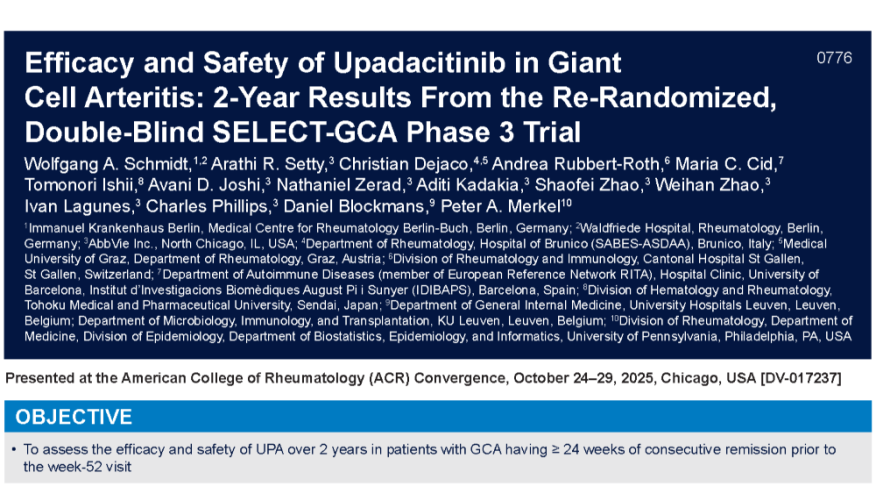The art of talking about risks with our patients Save

On the first day of EULAR 2024, I am debating Janet Pope. To make it more challenging, it’s about JAK inhibitor safety, and I have been allocated to argue against the regulatory safety warning and the randomised controlled trial that supports it. It’s a challenge, but one that has really given me an opportunity to reflect more broadly.
There are many things which are problematic about the regulatory safety warning, a number of which I didn’t put together fluently in my mind prior to this. Plenty has been said, but so much has been focused around the medicine and prescribing choices, and not about the patient.
What preparing for this debate made me think about is what we can actually do better.
Warnings are coarse tools which are not meant to be the only measure in place to guide best practice. As clinical rheumatologists we are not only used to traversing uncertainty, we are attuned to using a variety of tools in our arsenal to reduce risk for our patients. These skill sets, which are applicable across the breadth of rheumatology, serve us well in thinking about how to navigate cardiovascular and cancer risk management for our patients.
This is particularly the case given that the majority of the risk that our patients encounter does not come from the medicines they take, but a variety of other risk factors that they have, both traditional and non-traditional. If we really are concerned about cardiovascular events or cancer for our patients, enough to spend our time debating the relative place of JAK inhibitors in our treatment approaches, then reducing these risks is our business.
So, how can we do better?
I think there are a number of things, many of which are on the way. A focus on risk factor management is reflected in recent EULAR recommendations on how to manage cardiovascular risk. Risk stratification will hopefully come with big data and machine learning. One thing that the computers can’t replace us on, though, is the art of medicine - and in particular, patient counselling.
Jeff Curtis and Liana Fraenkel wrote an excellent piece in Arthritis and Rheumatology in April, entitled ‘The Art of Communicating Risk and Benefit to Promote Shared Decision-Making, Informed by Behavioural Economic Principles’. If you want to be a good clinician, I can strongly recommend it.
Really, it asks us to consider what prevalent cognitive biases - heuristics - patients have to deal with when they address risk, and what we can do to help them. Much of it makes instinctive sense, but using the principles that organizations use to shape our behaviour can help us support our patients into making better decisions.
I don’t want to replicate their piece, but a key example: framing effects and loss aversion. People fear losses more than they value a similar magnitude gain - irrationally, but this is how the human mind is wired. Presenting both frames - a 2% risk but a 98% gain - is something we might already do as a trick of the trade, but needs to pervade our entire approach to counselling. Icon arrays, which show dots to represent the hundred or thousand people who might be subject to any risk, can use this principle to contextualize risk and benefit.
These techniques are not sneaky tricks; they are reflections of how to navigate the human mind. If we want to do the best by our patients, we need to understand them.











If you are a health practitioner, you may Login/Register to comment.
Due to the nature of these comment forums, only health practitioners are allowed to comment at this time.